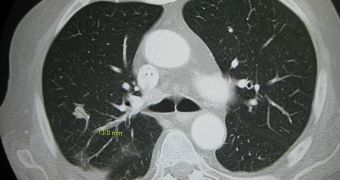Studies of the processes taking place during tumor metastasis may lead to the development of new drugs against cancer, say investigations at the National Academy of Medicine (NAM), in Buenos Aires, Argentina. These researches could reveal chemical factors that stop tumors from growing.
The idea that such substances exist within the tumors themselves has been circulating in the scientific community for years, but it was only recently that the Argentinian research group was able to discover the first evidence of their existence.
Laboratory models developed at NAM indicate that chemical agents produced by the tumors themselves may regulate their own growth, preventing them from developing at an unsustainable pace.
Details of the new study were published in the latest issue of the American Association for Cancer Research (AACR) medical journal Cancer Research. The work was led by NAM Division of Experimental Medicine (DEM) biology researcher Raúl A. Ruggiero, PhD.
The expert says that, by and large, the mortality of cancer in general is associated with metastasis, which is the spread of the condition to all major organs from a single point of origin. Preventing metastasis should therefore be a top priority in the fight against the disease.
The team was surprised to learn that certain factors produced by the cancer cells themselves were preventing the tumors from growing. NAM experts observed the process in a phenomenon called concomitant tumor resistance (CTR), which appears in lab models of localized tumors.
“The main cause of death in cancer patients is associated much more with metastasis rather than with the growth of a localized tumor, which generally can be surgically removed,” Ruggiero explains. He adds that the amino-acid tyrosine was found to be the main factor underlying CTR.
Several types of tyrosine were found to have this effect, whereas others did nothing to avert tumor growth. In tumor models featuring the positive variants of the amino-acid, metastasis occurred far later on than in model where only the normal versions of tyrosine were present.
“Both meta- and ortho-tyrosine have many attractive features. They exert anti-tumor effects at very low concentrations, are naturally produced in the proper tumor bearing organism, and do not appear to exert any toxic side effects,” Ruggiero explains.
“If these findings are confirmed we could develop new and more harmless means to manage malignant disease,” the investigator concludes.

 14 DAY TRIAL //
14 DAY TRIAL //